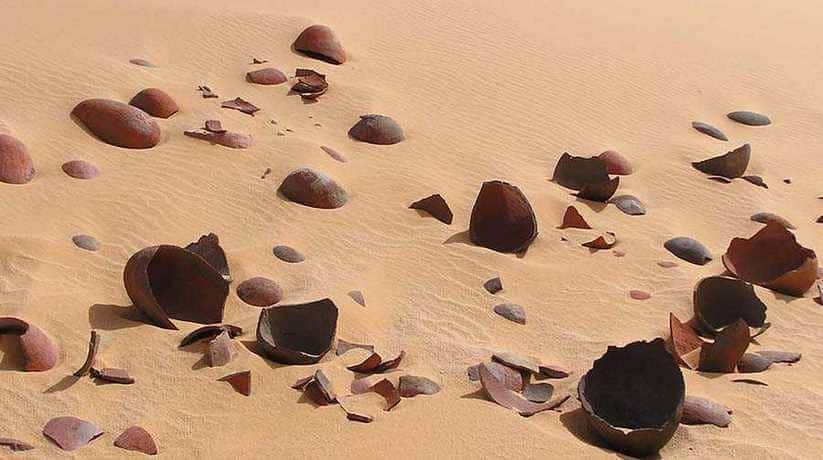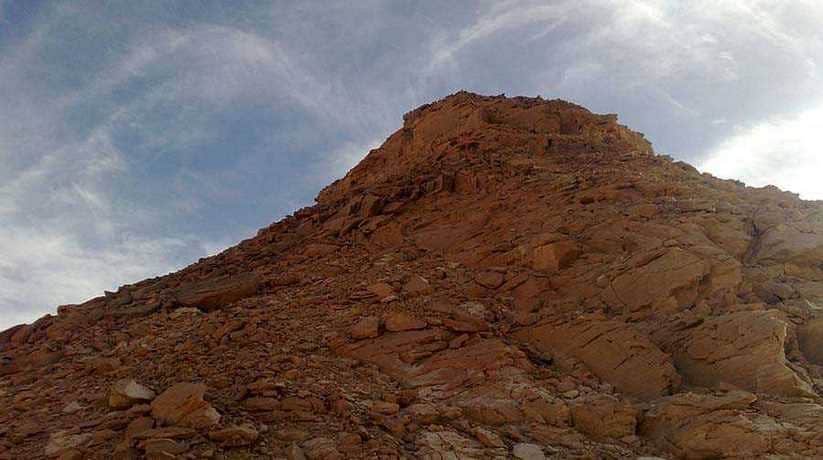Abu Ballas Gilf El Kebir Egypt tours, prices, booking
Abu Ballas is an archaeological site in Gilf El Kebir, Egypt. In fact, Abu Ballas known as “Pottery Hill” and located 200 km south-east of Dakhla oasis. In fact, it located in the Western desert of Egypt. Moreover, the site consists of two isolated sandstone cones in the Western Desert. Furthermore, both hills covered with Egyptian pottery. These vessels were at the beginning of the 20th century often well preserved. Much of them destroyed today. In fact, the site discovered in 1918 and 1923. Some recent research undertaken in the last years.
The nature of this site remained for a long time mysteries. In fact, Abu Ballas site was a station on an ancient desert road. The rout connected Dakhla Oasis with the Gilf Kebir and the Jebel Ouenat. The site installed in the late Old Kingdom or early First Intermediate Period. It was when some authorities decided to arrange supply depots on a track in the desert. Besides the pottery there, some rock carvings and stone tools discovered. Even a senet game board engraved on a stone found. In fact, the site has no water sources nearby. All water and food brought to the site from Dakhla Oases with donkeys. Most likely people lived here only for short periods of time.
Further details about Abu the area:
In fact, the “Pottery Hill”discovered by the surveyor Dr. John Ball in 1917. And then, it renamed Abu Ballas which means “hill of pots”by the Prince Kemal el Din. In fact, the prince was Egyptian explorer. The recently dated by thermos luminescence to about 1500 BC. It was the time when ancient Egypt still at the height of its power. In fact, the pots evidently contained water. So, it means that this had been a water depot in ancient Egyptian times.
During his 1926 visit, Prince Kemal El Din found some engravings half way up the rocky hill. He published together with the sites he found at Karkur Talh in Revue Scientific Illustrate. Abu Ballas site has figures of cow suckling a calf, gazelle hunter and a large indistinct human. In fact, they all seem to belong to the historic periods. Moreover, they havie more in common with rock art near the Nile Valley than the Gilf-Uweinat area.











